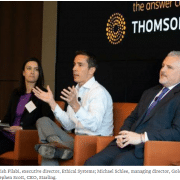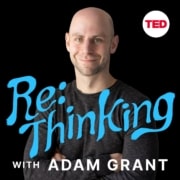Feeling All The Feels: The value of emotional culture at work
 You catch more flies with honey than you do with vinegar, says an old adage. In today’s economy, companies would be wise to continuously tend to their hives in order to maximize and motivate their worker bees.
You catch more flies with honey than you do with vinegar, says an old adage. In today’s economy, companies would be wise to continuously tend to their hives in order to maximize and motivate their worker bees.
A recent study published in Harvard Business Review examined the importance and benefits of fostering an “emotional culture” at work and its findings reinforce much of the buzz within behavioral and organizational psychology: that employees thrive in environments where joy, love and fun are the predominant cultures, as opposed to anger, fear and hostility.
Authors Sigal Barsade of the Wharton School and Olivia A. O’Neill of George Mason University make an important distinction early on in their article: many companies look to create a “cognitive culture” of shared intellectual values but ignore the “emotional culture” that includes employee cooperation, how to inject positivity into work and what emotions are ok to reveal within the company. And while you may struggle to identify the emotional culture at your own company, know that every organization has one even if it is one of suppression.
Companies are remiss to dismiss emotions as too “soft” of an issue to address, as the authors reveal:
In our research over the past decade, we have found that emotional culture influences employee satisfaction, burnout, teamwork, and even hard measures such as financial performance and absenteeism. Countless empirical studies show the significant impact of emotions on how people perform on tasks, how engaged and creative they are, how committed they are to their organizations, and how they make decisions.
Fortunately for today’s businesses, emotional culture can be influenced by a variety of factors, including some easy ones. To start, smiling more, or letting employees keep personal tchotchkes at their desks, makes people feel more at ease and lessens the impression that anger is a valued form of expression and fear is an appropriate stimulus within a company.
Barsade and O’Neill believe that understanding the most basic emotions—joy, love, anger, fear, sadness—is a good place to start for any leader trying to manage an emotional culture. They emphasize that “small gestures” such as little acts of kindness and support for an overwhelmed colleague can go a long way to align a company’s mission statement with their daily norms and behaviors.
As research has proven time and time again, ethical leadership starts with the tone at the top. Leadership is such an important lever because it establishes cultural norms and deeply shapes the behaviors employees consider appropriate, the effort they make in their work and the level of support they are willing to offer colleagues. Acknowledging that emotional culture reaps rewards, managers can also utilize—and model— fun and happiness to help both themselves and their teams reach their goals.
Existing research demonstrates that it is not difficult to do good for people while also remaining profitable. Companies registered as certified B-corps have made a public declaration to abide by rigorous standards of social and environmental performance, accountability, and transparency. Another study, summarized in Fast Company, notes that “From Southwest Airlines, Trader Joe’s, and Zappos to In-N-Out Burger, Quiktrip, and The Container Store, [the researcher] found that the small handful of companies that paid, trained, and treated workers well were also the companies with staff that were the most motivated and capable in their jobs, loyal to their employers, and likely to go above and beyond for customers…these companies often achieved a ‘virtuous cycle’ of higher customer satisfaction, better employee retention, and other long-term results that increased profits and made up for higher wages.”
Organizational culture is an integral component of an Ethical System. Research shows that an ethical corporate culture contributes to reduce business misconduct. Culture impacts everyone and everything from office décor to a company’s long term sustainability. In fact, ES collaborator Adam Grant recently wrote an Op-Ed in The New York Times emphasizing culture as the one component to ask about on every new job.
Studies like this one from Barsade and O’Neill showcase that there are a variety of measurements that can be incorporated to accurately form a complete picture of organizational culture, while highlighting several companies that are breaking the mold and looking towards their emotional culture as a resource worthy of investment, research and support.
Changing organizational culture is a long term commitment, and one that is never an easy task, but the benefits to profits, loyalty and reputation are surely worth the effort. While renting a bounce house is fun, it does not substitute for employees that jump for joy when they walk through your front doors.
*Image copyright Pixar from the movie Inside Out









